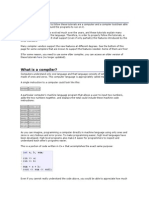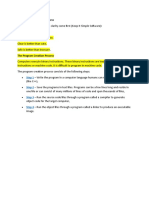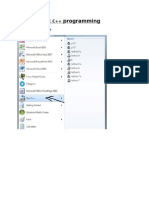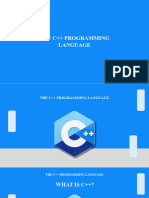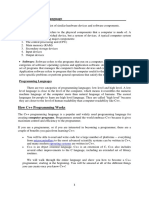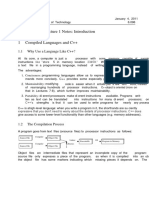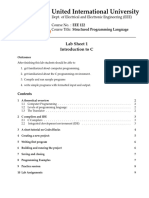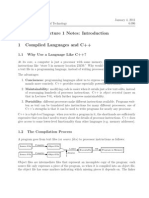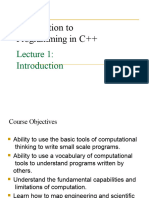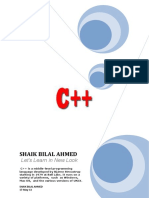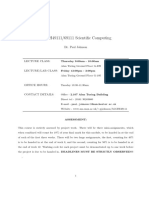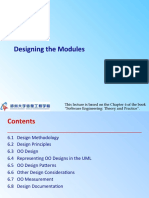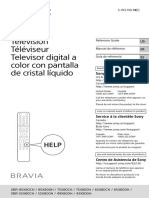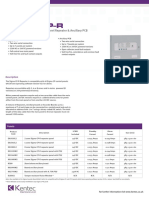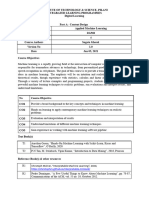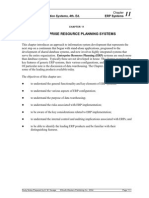0% found this document useful (0 votes)
116 views8 pagesENGN2912B Lecture 01 Material
This document discusses the basics of compiling and running C++ programs. It explains that computers understand only machine language, so C++ code must be compiled into machine language instructions. A compiler translates the high-level C++ code into machine code. The compilation process involves preprocessing, compiling, assembly, and linking. Console programs interact with the user through text input and output and are useful for learning programming basics. Examples show how to compile and run a simple C++ console program on different platforms.
Uploaded by
trigun114Copyright
© © All Rights Reserved
We take content rights seriously. If you suspect this is your content, claim it here.
Available Formats
Download as PDF, TXT or read online on Scribd
0% found this document useful (0 votes)
116 views8 pagesENGN2912B Lecture 01 Material
This document discusses the basics of compiling and running C++ programs. It explains that computers understand only machine language, so C++ code must be compiled into machine language instructions. A compiler translates the high-level C++ code into machine code. The compilation process involves preprocessing, compiling, assembly, and linking. Console programs interact with the user through text input and output and are useful for learning programming basics. Examples show how to compile and run a simple C++ console program on different platforms.
Uploaded by
trigun114Copyright
© © All Rights Reserved
We take content rights seriously. If you suspect this is your content, claim it here.
Available Formats
Download as PDF, TXT or read online on Scribd
/ 8
